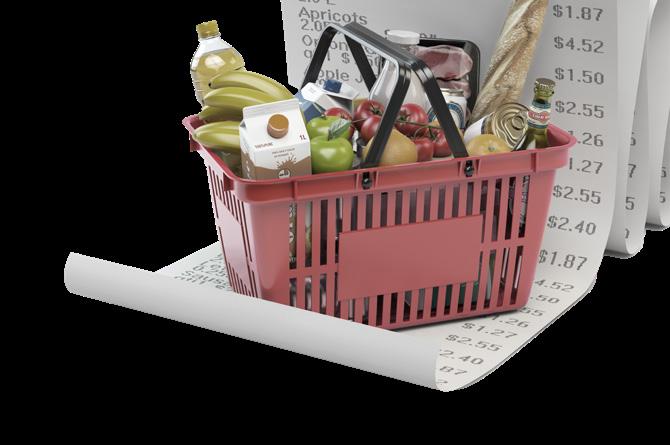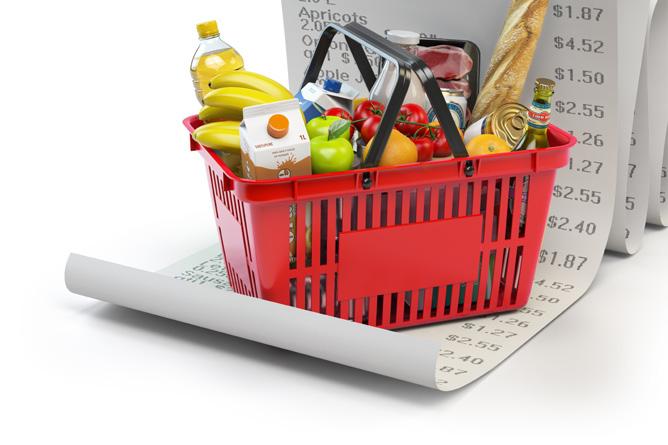
3 minute read
Ask the Expert

Interview with Jason DeVinney DeVinney is the business development manager for Checkpoint Systems supporting grocery retailers with shrink, sales, and inventory improvements driving ROI with technology such as EAS and RFID hardware, software, and labels. With more than twenty-five years of retail experience with CGPs, LP professionals and retail merchandising teams, DeVinney has successfully deployed chain-wide programs for some of the largest retailers in North America, Latin America, Europe, and Asia. He can be reached at jdevinney@checkpt.com.
Controlling Grocery Shrink
When comparing grocery retailers to the overall retail industry, we find grocery has some of the lowest margins in retail while also experiencing higher shrink. The negative impact on the grocery retailer and the shopper is significant. What’s the grocery industry look like?
Grocery sales in the US is big business and contributes heavily to the US economy. According to the USDA, the US grocery market had revenues of over $688 billion in 2018 from a large grouping of over 115,857 grocery retailers. Stores range from the largest US retailers to countless local mom-and-pop stores.
An incredible 92.2 percent of all spending in the US on food and drink occurs in what are categorized as grocery stores (supermarkets and smaller independent grocers). Convenience stores make up the next highest proportion, a mere 4.5 percent. The remaining 3.3 percent is spent in specialized food stores.
What’s shrink look like?
The 2020 National Retail Security Survey revealed shrink was at an all-time high, accounting for 1.62 percent of a retailer’s bottom line, costing the industry $61.7 billion. Prior to the economic downturn, total shrink consumed 3.1 percent of a typical grocer’s revenue, much higher than any other retail sector according to the Food Industry Association (FMI).
Now more than ever, grocery retailers have a major opportunity to combat shrink and positively impact the overall value proposition to shoppers while increasing net profits. What are the high-theft categories in grocery?
Meat is a major shrink item and is increasing over the last year in both prepackaged meat and meat packaged in the store. Another major contributor to shrink is wine and spirits with liquor being the main driver with product often defensively merchandised and locked in a glass cabinet or behind the counter.
Based on Checkpoint’s annual survey with major US retailers, top shrink categories include health and beauty, cosmetics, and over-thecounter drugs. Grocery retailers have the unique challenge of carrying a variety of high-shrink items like fresh meat, fish, and seafood, while combating shrink on personal care items such as teeth whitening, body wash, shaving, and fabric-care products. Retailers have found that visible tagging will reduce shrink and increase sales on these high-theft items.
Is launching EAS difficult?
EAS success in grocery is easier than ever based on two major developments. First, improved radio frequency (RF) technology that has enabled increased detection at the entry/exits and instantaneous deactivation at the pointof-sale allowing automated deactivation by the cashier or at self-checkout. Second is merchandise protection where essentially anything in the store can easily be protected at source with a RF label that is product and package agnostic.
According to FMI, average shrink is 3.1 percent of a grocer’s revenue and item-level shrink can be 4 to 5 percent for high-risk items. Launching a merchandise protection program will keep high-shrink products on the shelf and available for sale. The result is increased profits and improved shopping experience.
How long is the ROI for EAS systems?
Based on a recent Checkpoint survey, 90 percent of North American food retailers utilizing EAS systems recognized an ROI in the first twelve months, and 100 percent by the eighteenth month. The ROI is driven largely due to shrink reduction on a select list of high-risk, high-volume products with the shared objective of increasing profits via greater on-shelf availability (OSA). In speaking to food retailers, shrink reduction can be recognized from 10 to 40 percent on protected items, improving OSA, thereby making the product available to customers for purchase. Retailers are demonstrating that everyone wins with EAS, from the shopper to the consumer goods manufacturer to the grocery retailer.









